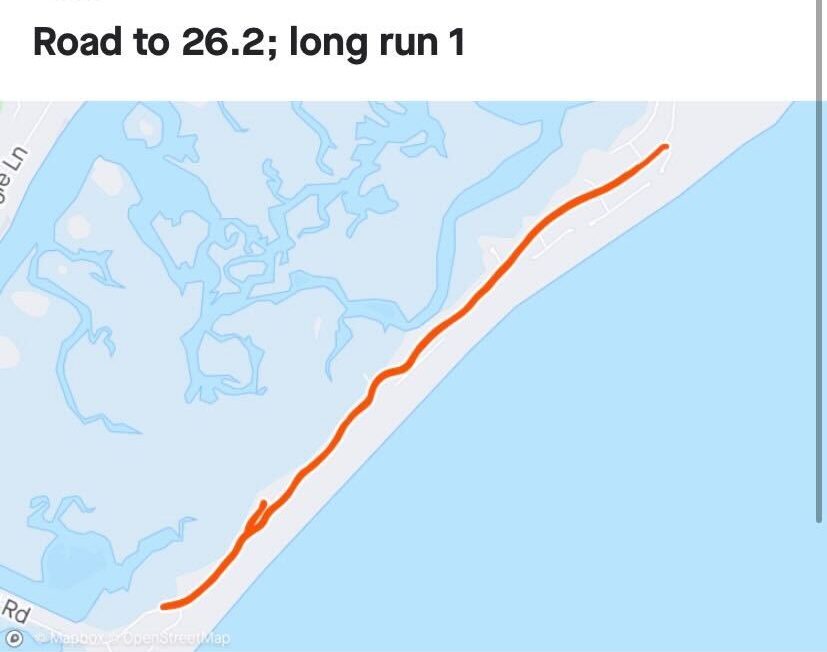I recently ran my first ever marathon with Peloton’s Road to 26.2 marathon training program. In this article, I detail everything that I liked, didn’t like, and what i would do differently if I were to do it all over again.
Race Report
Name: Outer Banks Marathon
Date: November 13th, 2022
Distance: 26.2 miles
Location: Outer Banks, North Carolina
Goal Time: 4:15:00
Time: 4:27
About me: I have never enjoyed running, with my longest run before the program being around 4 miles. While running a marathon has always been on my bucket list, running even a half seemed wildly unattainable prior to starting the program.
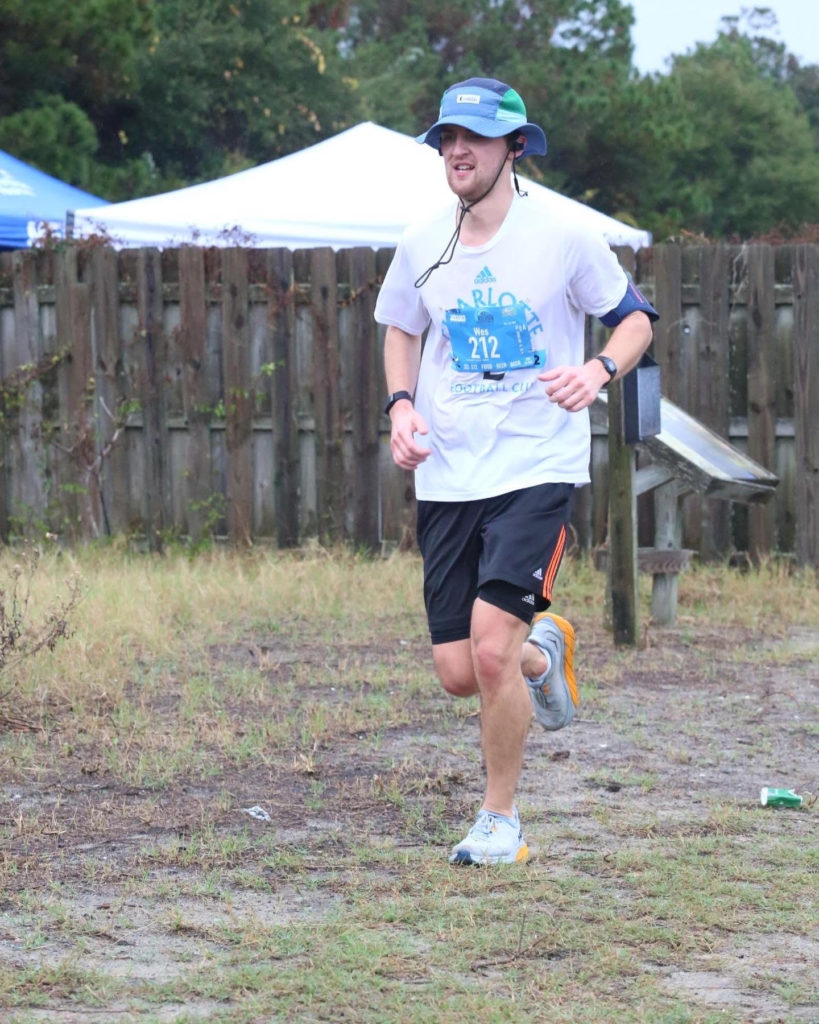
Program Overview
Peloton’s Road to 26.2 is an outdoor, audio-format running class designed to help you run your first marathon or improve on previous marathons in just 18 weeks. The program is split up into three parts, which allows for short-term attainable goal-setting while still working towards the end destination of a full marathon.
Part 1:
Part 1 takes you from a running novice up to a 10 miler in just six short weeks. For complete novices, the program suggests working up to 3 or 4 miles on your own before starting the program as the first long run (on day 7 of the first week) is 4 miles total. In weeks two and three, you quickly jump up to 6 and then 8 miles. This feels very aggressive off the bat, but the dropdown week in week four helps to prevent injury before then pushing your boundaries with an 8-mile run and a 10-mile run in weeks five and six. Below, I’ve documented my full experience with the first 2 weeks of training to provide a first hand experience of kicking off the program.
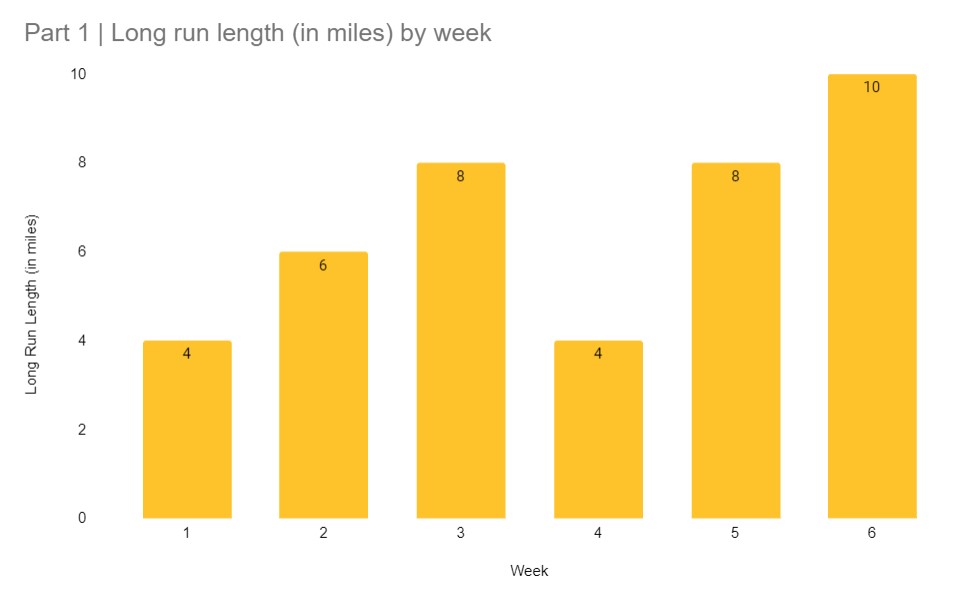
Part 2:
While the mileage jumps in part 2 feel less aggressive than those in part 1, crossing the half marathon hump is certainly a feat. Instead of adhering strictly to Peloton’s long run plan, I chose to sign up for an organized half marathon on week 9, which was a great way to celebrate how far I had already come.
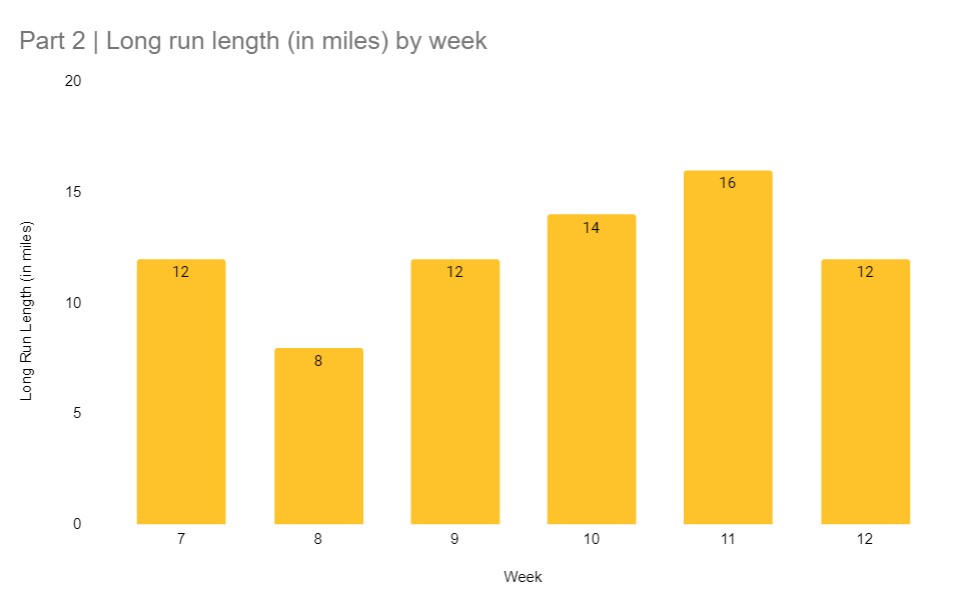
Part 3:
Part 3 is where the fun really begins. As your long runs start to surpass 2 and even 3 hours, you need to start seriously thinking about your fuel strategy for maintaining energy. Your runs take much more preparation, or else you will find yourself 13 miles away from your house with only 7 miles left in your run. In my experience, these long runs start to consume your day, as your energy sources are completely depleted after the run and your legs feel like they might fall off. While each long run within this phase felt like a new, exciting feat, overall I felt confident throughout part 3 knowing the work I had done in parts 1 and 2 had prepared me to push myself.
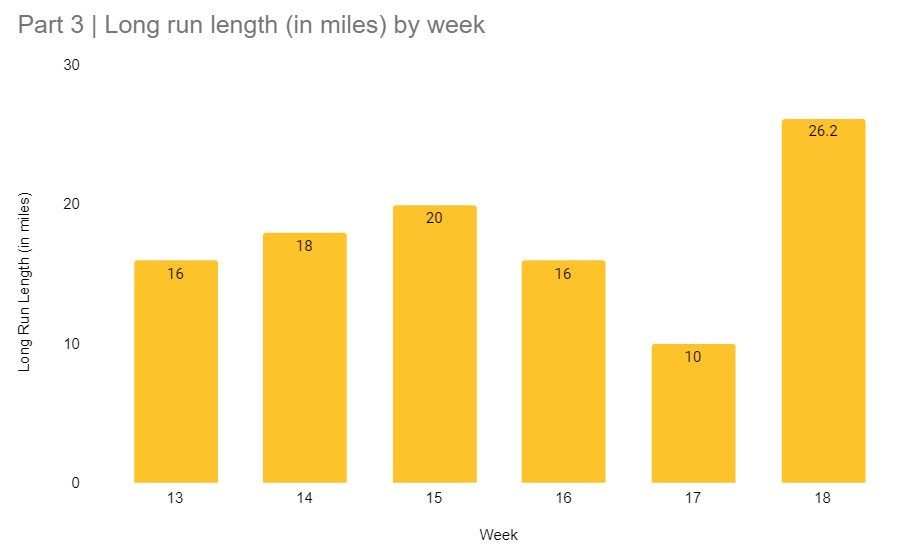
Typical Weekly Training Schedule
Day 1: Rest day
Day 2: 10 minute pre run warmup and 30 minute tempo run
Day 3: Strength for runners
Day 4: 10 minute pre run warmup and 30 minute marathon race prep
Day 5: Strength for runners
Day 6: Shortened fun run
Day 7: The long run
Full Long Run Schedule for the 26.2 Program
Please see the chart below for a full breakdown of your day 7 long runs throughout the program.
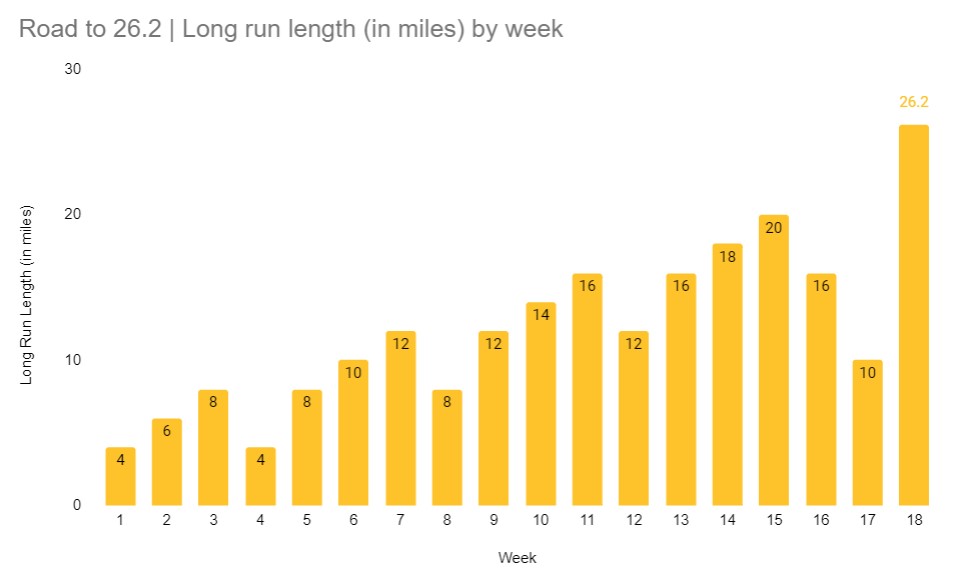
What I Liked About Peloton’s Road to 26.2
- Everything feels attainable. By breaking the program into 3 sections, I was able to visualize and work towards 3 different, seemingly-attainable goals while still having the end marathon on the horizon.
- The speed work really helps you understand and improve your pace. Coming from someone who only had three modes prior to the program (walking, jogging, or sprinting), the coaching around “intensity levels” really pushed me to notice fractional differences in my speed and how long I was able to maintain that pace. Come race day, I had a strong understanding of the different paces I would run at for a 5k vs. a half marathon vs. a full marathon.
- For someone that has always struggled with the mental aspect of distance running, having a coach in your ear helps you learn how to speak positively to yourself and distract yourself when the easy choice of quitting presents itself.
- Overall, the coaches are great. Having a diversity in coaches means you will naturally resonate with some over others, but I found that all coaches in the program were able to motivate me and push me beyond my boundaries.
What I Didn’t Like About Peloton’s Road to 26.2
- There is not an audio class for any of your weekly long runs. After having a coach in your ear throughout your other runs, it is hard to adjust to picking your own music and self-tracking your long runs.
- The classes repeat, sometimes for 3 weeks in a row. While the coaches give different instructions for each of the three weeks, re-taking the same class with the same instructor, stories, music, and advice can start to drain the fun out of your run.
- The intra-week runs are not long enough. Only running 3 – 7 miles for the two training runs made the long runs feel especially long.
- Because the class caters to a broad audience, the music spans all genres. Normally, I would put this in the positive column, but there were multiple instances where I was at the peak of one of my runs and a song produced a head-banging dubstep drop that felt like it was going to rattle my brain inside my skull.
Advice for undertaking the Road to 26.2 Program
- Run more miles intra-week. The tempo and marathon race prep runs range from 30 to 60 minutes, which for me meant 3 to 7 miles per run. Especially during parts 2 and 3, running these short distances during the week makes you feel inadequately prepared for your weekend long runs.
- Run an organized half marathon in weeks 6-10. Not only does this reduce nerves for your marathon by giving you experience running in an organized race (where you will be surrounded by 100s of other people and following a predefined route), it also helps to prevent burnout by giving you something to be proud of in the midst of the program.
- If nothing else, DO THE LONG RUNS. Increasing the distance of your long runs alone can get you to the finish line of a marathon, while the rest of the work helps to build strength, confidence, and prevent injury. But if you are going to skip a day or two in the program, do not skip the long runs – they not only help to build key muscle fibers, they also help you strengthen your mental game to be capable of running for 4 hours straight.
- Spend the money to get a good pair of socks and shoes. I used a pair of beat up athletic shoes for the first 6 weeks until my joints could no longer take it. I finally got a pair of Hokas and all of a sudden I felt like I was gliding through my long runs.
- Program in cool down stretches after each run and throw some yoga into your training mix. I felt myself on the verge of injury at a couple points throughout the program, and think my yoga cross-training really helped get me agile and able to take on increased strain.
- Force yourself to go for runs in tough conditions. I often waited out bad weather for my long runs or even rescheduled them for another day of the week. Come race day, when I was faced with pouring rain and 10-15mph headwinds, I was not a happy camper.






